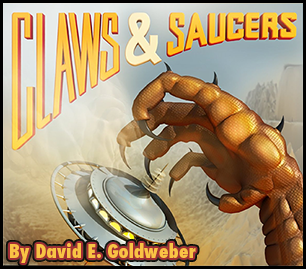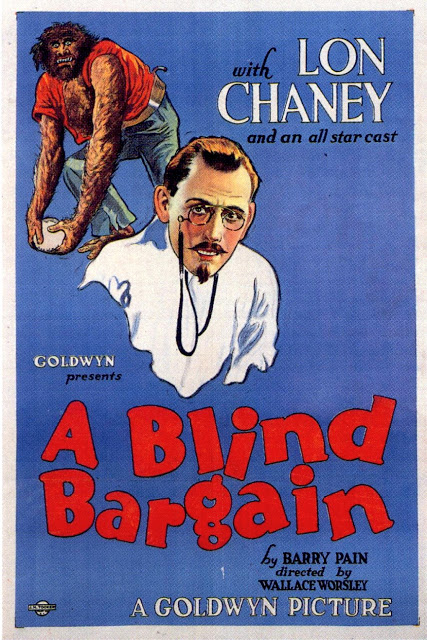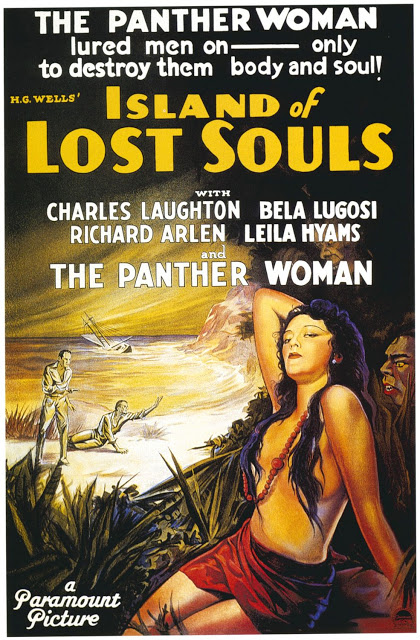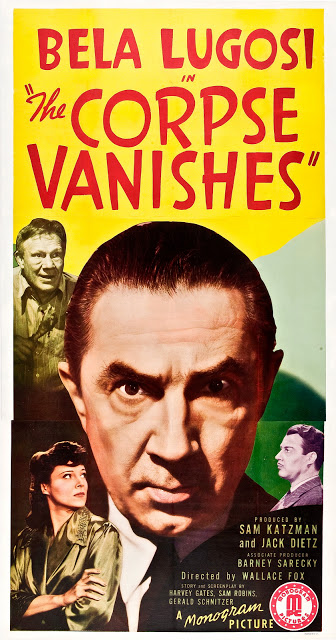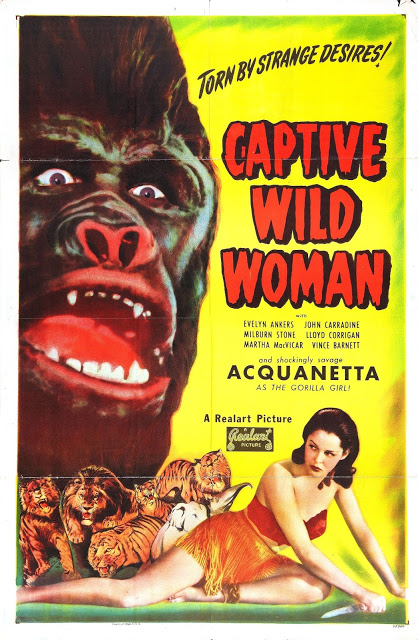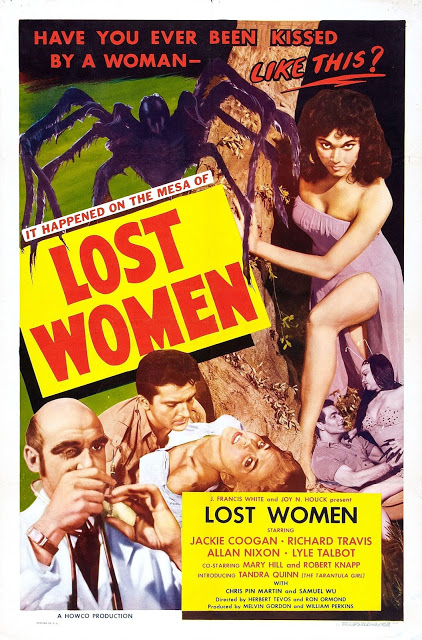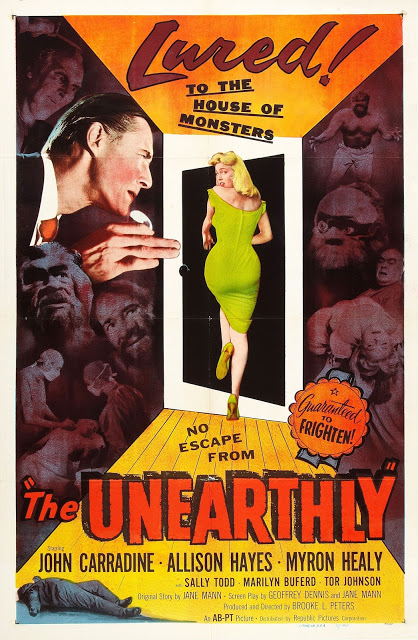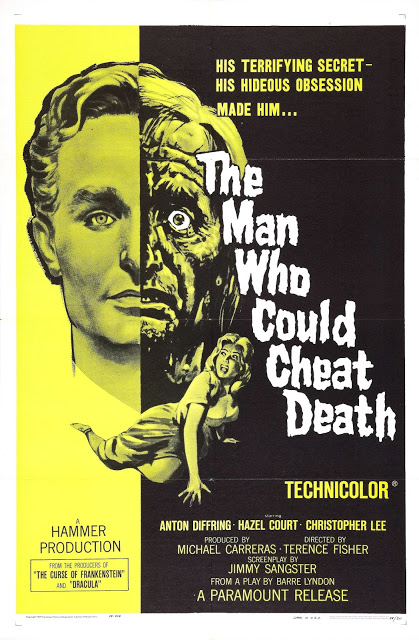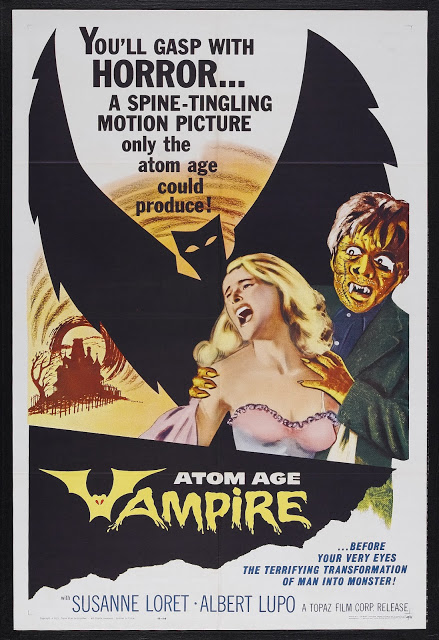When we think of bodily transformation in science fiction or horror films, we tend to imagine things happening at the cellular level, perhaps through a virus, or at the DNA level though computer-driven engineering.
But for the first several decades of sci-fi horror, transformations were envisioned as the result of tissue and organ transplants: specifically, gland transplantation. Typically, unspecified endocrine glands are transplanted from animals into people – or from people into animals – thereby creating a human-animal hybrid.
In the films, the experiments are often successful scientifically… but they inevitably lead to horrible social or psychological effects in their subjects.
Most of the subjects are unwilling victims to begin with, so is it any wonder they become psychotic when they realize they are no longer themselves?
A BLIND BARGAIN (1922)
I believe this is the very first gland transplant movie. Unfortunately, the film is lost. But we have the story and several stills, so we know that a mad doctor transplants ape glands and blood into a hapless human victim.
He tricks our hero into submitting to an operation, but he is foiled when one of his failed quasi-human simians attacks him and snaps his spine.
Lon Chaney played two roles: the doctor, looking like an evil Sigmund Freud, and the ape-man, looking like the Hunchback of Notre Dame with extra big teeth. Tod Browning (of Dracula fame) directed.
ISLAND OF LOST SOULS (1932)
Glands are mentioned only in passing, but we’d be remiss if we didn’t include this famously gruesome horror from pre-Code Hollywood.
Unlike other films on the list in which people are transformed into animals, Lost Souls takes the opposite tack to depict animals being transformed into people. A cold-hearted authoritarian scientist (played with devilish delight by Charles Laughton) operates on the animals in a “House of Pain” until they start to turn human.
Most of the victims get stuck halfway between animal and human, but they try to talk themselves into being human. “Are we not men..?” asks a hairy-headed Bela Lugosi. The original source was H.G. Wells’s Island of Dr. Moreau.
TORTURE SHIP (1939). It’s mostly a crime movie, with little attention paid to the medical procedures. But the concept is clear: a well-meaning but misguided doctor traps criminals on a chartered ship, hoping to cure their criminal tendencies through gland transplants.
But he must take glands from an evil person first, then temporarily transplant them into a good person, then transplant them back to an evil person in order to cure them.
It’s pretty convoluted and silly, but it’s only an hour long and moves at a very fast pace. No animal glands are involved in this one.
It was vaguely (very vaguely) suggested by Jack London’s first published story.
THE CORPSE VANISHES (1942)
At the very least, human “gland fluid” (if not the gland itself) gets transplanted in this strange horror-mystery co-produced by Sam Katzman.
Bela Lugosi plays a mad doctor keeping his ailing wife alive by injecting her with fluid drawn from dead virgins.
Bonus: the dwarf is Angelo Rossitto from Freaks and – much later – Mad Max: Beyond Thunderdome.
CAPTIVE WILD WOMAN (1943)
Here’s the first in a trilogy which – one by one or all in a row – might comprise the best gland transplant movies ever made. In all three, a sexy woman who is really an unsexy gorilla changes back and forth several times between being a sexy woman and being an unsexy gorilla.
So it’s human glands transplanted into an ape to turn the ape into a human.
Captive Wild Woman stars the great John Carradine as the mad scientist. The first sequel, Jungle Woman, 1944, stars J. Carrol Naish. The second sequel, The Jungle Captive, 1945, features Rondo Hatton.
All three pictures are suspenseful since the “woman” might kill someone when in gorilla form but might form a romance with a human male when in human female form.
MESA OF LOST WOMEN (1953)
Co-directed by 60s trashmeister Ron Ormond, this strange B-picture adds a new twist to the gland transplant theme.
To create spider-women, the mad doctor first transplants human glands into spiders… but then he transplants them back into humans (sexy ladies) after the glands have absorbed spider properties.
The second half is slow, but the whole thing is good for 50s camp. The doctor has an eyepatch and a mole!
THE UNEARTHLY (1957)
Having transplanted human glands into an animal back in Captive Wild Woman, John Carradine now transplants human glands into other humans in The Unearthly.
The hope is to extend life indefinitely, as young glands keep the body young. Allison Hayes (the 50-Foot Woman) is his victim. Tor Johnson (from Plan 9) is his helper.
It’s a terrific B-movie with snappy dialogue, lurid gore, and several lovely ladies in various stages of undress. If only it had a less abstract title, it might have become as famous as other 50s sleaze classics like The Brain that Wouldn’t Die.
THE MAN WHO COULD CHEAT DEATH (1959)
Made by Hammer and featuring Christopher Lee in a supporting role, Man Who Could Cheat Death seems inspired by The Unearthly yet is a partial remake of Man in Half Moon Street (1945), about a doctor who receives periodic gland transplants to keep himself young.
It’s human-to-human here, so the concept is less exciting than those of our animal-to-human or human-to-animal pictures. It’s decent entertainment, but the sumptuous Victorian interiors are perhaps the main appeal.
ATOM AGE VAMPIRE (1960)
This Italian B-movie has a very odd premise. A sympathetic mad doctor wants to save a beautiful wounded stripper with whom he has fallen in love. But he needs fresh glands from living female victims.
Since he feels guilty about killing these victims, he temporarily turns himself into a gorilla-like beast so that he can kill without remorse, like Dr. Jekyll turning into Mr. Hyde when he wants to indulge his passions.
Where is the vampire? Only in the title. The movie is mediocre, but it has good gore. It was produced by Mario Bava who would soon become famous for directing Black Sunday.




































































































